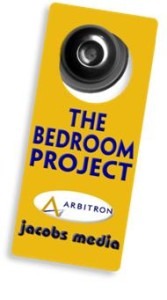 Back in 2007, we learned a ton about ethnography when Arbitron hired us to do what became known as “The Bedroom Project.” These were organized “home invasions” among young people in L.A. and Columbus, Ohio, designed to learn about how they used media and technology.
Back in 2007, we learned a ton about ethnography when Arbitron hired us to do what became known as “The Bedroom Project.” These were organized “home invasions” among young people in L.A. and Columbus, Ohio, designed to learn about how they used media and technology.
Three years later, we repeated the process with “Goin’ Mobile,” the radio industry’s first look at the impact of mobile phones and media use and our sociology.
In each case, these studies featured rolling up our sleeves and spending time observing consumers using smartphones, video games, and social media sites. This is the recommended practice espoused by the great marketer and researcher Clayton Christensen who believes that only by watching people using products can we hope to understand what they’re hiring our brands and products to do. As he posits, “Innovators are also intense observers.”
Recent interviews we conducted for the NAB among automakers revealed they’re doing the same thing – spending time with consumers in their cars, watching them use dashboard features, notably the center stacks where the media is embedded or imported from smartphones.
And now Google has joined the movement. They have more data than perhaps any company in the world, and yet they’re acknowledging that all the usage metrics in the world are no substitute for oberving consumer behavior.
They’ve rolled out a van with just that purpose in mind – to figure out how people use stuff. In an interview with Google researcher Laura Granka, the Associated Press learned the tech giant is “trying to understand the whole end-to-end experience, which is why we are trying to get out to more locations and see more people so we can gather more context.”
 From Chapel Hill to Reno to Boulder, the Google team is on the road as you read this post, eating copious amounts of fast food, and trying to learn why people do what they do. You can bet the car may very well be part of their focus, given Google’s groundbreaking work on autonomous cars, as well as their Android Auto dashboard platform.
From Chapel Hill to Reno to Boulder, the Google team is on the road as you read this post, eating copious amounts of fast food, and trying to learn why people do what they do. You can bet the car may very well be part of their focus, given Google’s groundbreaking work on autonomous cars, as well as their Android Auto dashboard platform.
Testing the user experience is becoming a key mandate at most companies. That’s because even with all those analytics in the world, there’s no substitute for observing human behavior. As they go back and forth with Apple in their race to dominate the way technology impacts our lives, Google’s effort to better understand how their products are used is more than symbolic. It suggests that research comes in many different size, shapes, and methodologies.
In radio, we pay scant attention to how consumers use our content and the growing number of distribution outlets that carry it. It’s not enough to stream, to build apps, or to offer podcasts. Understanding how this content and these tools are being used, and what’s it like from the end-user point of view is essential to succeeding as a brand.
 Whether it’s usability studies for your website or your app, test-driving your stream each week, and bringing listeners into the station to hear their feedback is now table stakes in the worlds of media and entertainment.
Whether it’s usability studies for your website or your app, test-driving your stream each week, and bringing listeners into the station to hear their feedback is now table stakes in the worlds of media and entertainment.
Now you may be thinking that no radio station – or even radio company – could ever hope to compete with a behemoth like Google or Apple. But last I checked, most stations still have vans. And while many are sadly taking up space in parking lots, there are many different ways they could be put to use to interact with fans, learm from them, and observe them.
With each passing month, this stuff really matters. The experience of using your radio station is something not to be taken for granted. Even unknowingly, the audience is making judgements about convenience, ease of use, and products satisfaction. Observing their world in their terms is where it starts.
Has anyone seen the van keys?
- What To Do If Your Radio Station Goes Through A Midlife Crisis - April 25, 2025
- A 2020 Lesson?It Could All Be Gone In A Flash - April 24, 2025
- How AI Can Give Radio Personalities More…PERSONALITY - April 23, 2025




Leave a Reply